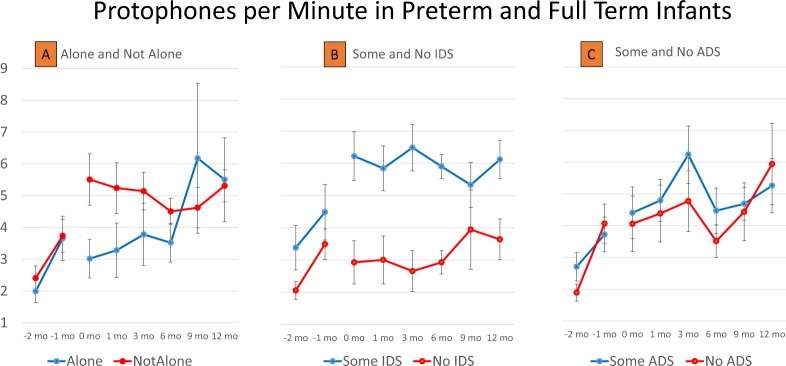Figure 3.
Protophone rates in preterm and full-term humans in differing circumstances. (A) Even when infants were alone (no one else was deemed present in the room by the coders), they produced large numbers of protophones (≥2/minute even in the -2 month old preterms), a strong indication of the endogenous nature of infant vocal exploration. The full-term infants, especially at younger ages, produced significantly more protophones when they were not alone, but adult speakers may have driven this effect by approaching very young full terms when they were producing protophones. Error bars are standard errors of the mean, computed based on the raw data from each infant and independent of the modeled data from the GEE analyses. (B) GEE analysis showed that full-term infants produced significantly more protophones when there was infant-directed speech (IDS), but once again parents may have driven the effect especially at the youngest ages, by engaging infants vocally when they heard the infants begin to vocalize. (C) Higher rates of adult-directed speech (ADS) were reliably related to higher protophone rates for the full-term infants, but the effect was not observed for all ages, and the effect size was much smaller than in the case of IDS.

